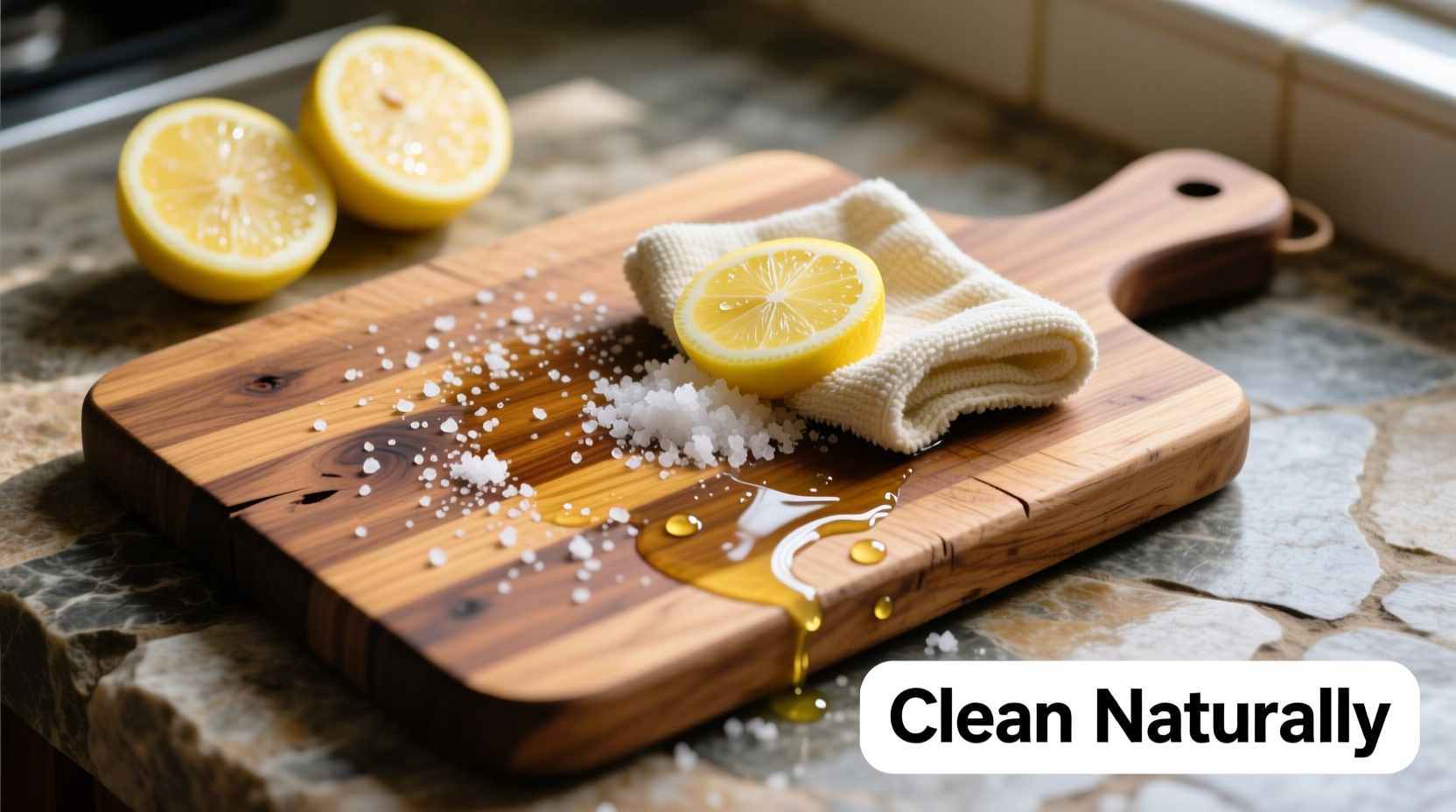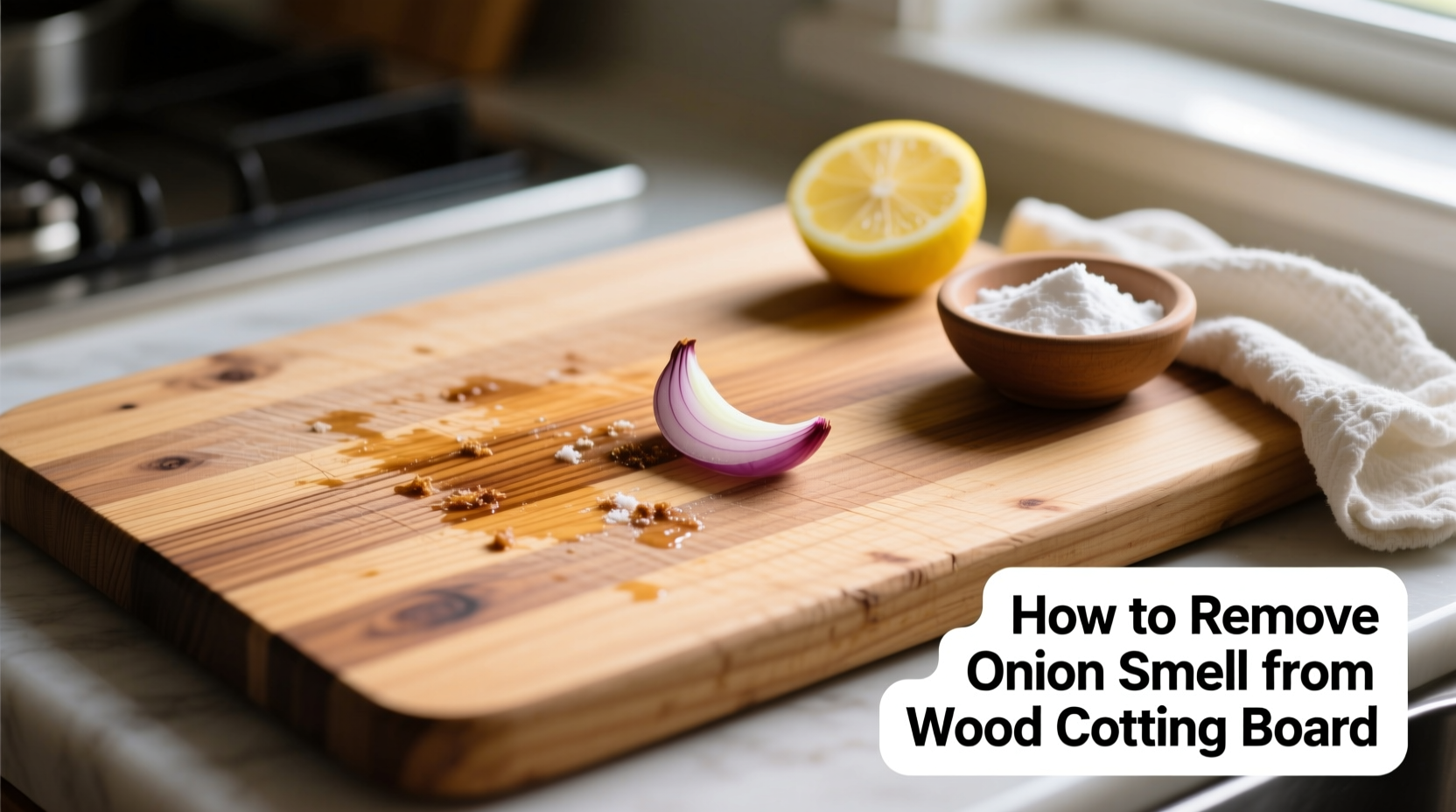Immediately rub your wood cutting board with coarse salt and half a cut lemon, then rinse with warm water and air dry upright. This natural method neutralizes onion odors within minutes while preserving your board's integrity—no harsh chemicals needed.
That pungent onion smell clinging to your favorite wood cutting board isn't just unpleasant—it can transfer flavors to your next meal. As someone who's worked in professional kitchens for over 15 years, I've seen countless home cooks struggle with this common problem. The good news? You don't need special products or complicated procedures. With the right approach, you can eliminate onion odors safely and effectively while maintaining your board's longevity.
Why Wood Cutting Boards Absorb Onion Smells
Wood's natural porous structure makes it excellent for knife preservation but also prone to absorbing strong odors like onions. When you chop onions, sulfur compounds penetrate microscopic pores in the wood surface. Unlike plastic boards, wood has natural antimicrobial properties, but those same pores trap odor molecules that linger long after cleaning.

Immediate Action: What to Do Right After Chopping Onions
Timing matters when combating onion odors. The sooner you address the smell, the easier it is to eliminate:
- Salt Scrub Method: Sprinkle coarse kosher salt liberally across the board's surface. The salt's abrasive texture helps lift odor molecules while drawing out moisture that carries smells.
- Lemon Power: Cut a lemon in half and rub the cut side firmly over the salted surface. The citric acid neutralizes alkaline onion compounds while the lemon's oils displace odors.
- Rinse Properly: Use warm (not hot) water to rinse away residue. Hot water can cause wood to warp or crack over time.
- Dry Correctly: Stand your board upright against the sink to air dry completely. Never leave it flat where moisture can pool.
Deep Cleaning Solutions for Persistent Onion Smells
When immediate cleaning isn't possible or odors have set in, these proven methods deliver results:
Baking Soda Paste Treatment
Create a thick paste with baking soda and water. Spread evenly across the board and let sit for 15-20 minutes before scrubbing with a soft brush. Baking soda's alkaline nature neutralizes acidic onion compounds. Rinse thoroughly and dry upright. The USDA Food Safety and Inspection Service confirms baking soda's effectiveness in odor elimination for food contact surfaces (FSIS, 2023).
Vinegar Soak Method
For stubborn odors, wipe the board with undiluted white vinegar using a clean cloth. Let sit for 5 minutes (don't soak wood excessively), then rinse with warm water. Vinegar's acetic acid breaks down sulfur compounds responsible for onion smells. This method works particularly well on end-grain boards where odors penetrate deeper.
| Cleaning Method | Effectiveness | Time Required | Wood Safety |
|---|---|---|---|
| Lemon & Salt | ★★★★☆ | 5-10 minutes | Safest option |
| Baking Soda Paste | ★★★★★ | 20-30 minutes | Very safe |
| Vinegar Wipe | ★★★☆☆ | 10-15 minutes | Safe with proper drying |
| Bleach Solution | ★★★★★ | 15-20 minutes | Risk of damage with frequent use |
When Not to Use Certain Methods
Understanding context boundaries prevents damage to your cutting board:
- Avoid dishwasher use: High heat and prolonged moisture exposure warp wood and accelerate cracking
- Limited bleach use: While effective for sanitizing, frequent bleach applications degrade wood fibers. The FDA recommends no more than monthly use for wooden surfaces (FDA Food Code, 2022)
- No soaking: Never submerge wood boards—this causes swelling and separation
- Oil after deep cleaning: Always recondition with food-grade mineral oil after intensive treatments
Preventing Onion Smells Before They Start
Professional kitchens use these preventative measures to minimize odor transfer:
- Dedicated boards: Maintain separate boards for strong-smelling vegetables versus proteins and fruits
- Immediate post-use cleaning: Wipe with salt and lemon within 5 minutes of chopping onions
- Regular oiling: Maintain a protective oil barrier with monthly mineral oil applications
- Proper storage: Store boards upright with space between surfaces for air circulation
Maintenance Schedule for Odor-Free Boards
Follow this simple routine to keep your wood cutting boards smelling fresh:
- Daily: Wash with mild soap, rinse, and dry upright after each use
- Weekly: Deep clean with baking soda paste for odor prevention
- Monthly: Sanitize with vinegar solution and recondition with mineral oil
- Seasonally: Sand lightly with fine-grit sandpaper to refresh surface
When to Replace Your Cutting Board
Even with proper care, wood boards have a lifespan. Replace your board when:
- Deep grooves harbor persistent odors despite cleaning
- Cracks develop that could trap bacteria
- Surface feels rough or splinters
- Odors transfer to non-onion foods consistently
FAQ: Wood Cutting Board Odor Questions
Q: Can I use essential oils to remove onion smell from my wood cutting board?
A: While some suggest tea tree or lavender oils, these can impart their own strong flavors to food. Stick with food-safe options like lemon, vinegar, or baking soda for reliable results without flavor transfer.
Q: Why does my wood cutting board smell like onions even after washing with soap?
A: Standard dish soap cleans surface residue but doesn't neutralize odor compounds trapped in wood pores. You need acidic (lemon/vinegar) or alkaline (baking soda) treatments to break down the sulfur compounds causing the smell.
Q: How often should I oil my wood cutting board to prevent odors?
A: Monthly oiling maintains a protective barrier that reduces odor absorption. After washing and completely drying your board, apply food-grade mineral oil with a clean cloth, let absorb for 15 minutes, then wipe off excess.
Q: Is it safe to use baking soda on wood cutting boards?
A: Yes, baking soda is completely safe for wood surfaces. Unlike harsh abrasives, it gently cleans without scratching. The University of Minnesota Extension confirms baking soda's safety for food contact surfaces when properly rinsed (UMN Extension, 2024).











 浙公网安备
33010002000092号
浙公网安备
33010002000092号 浙B2-20120091-4
浙B2-20120091-4